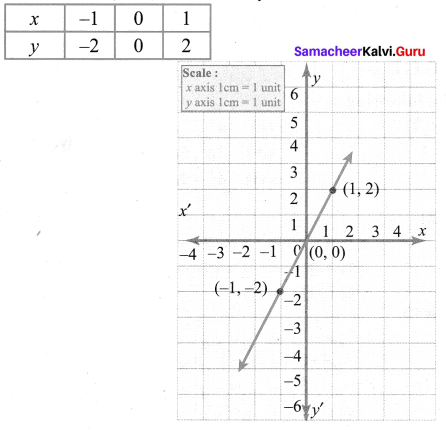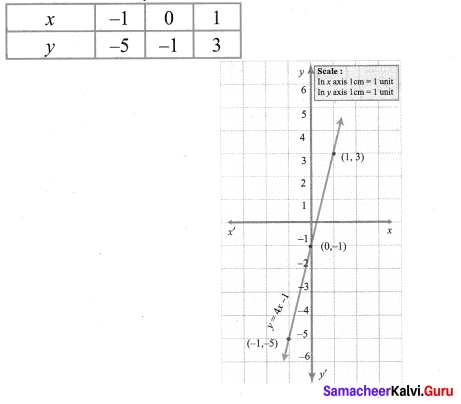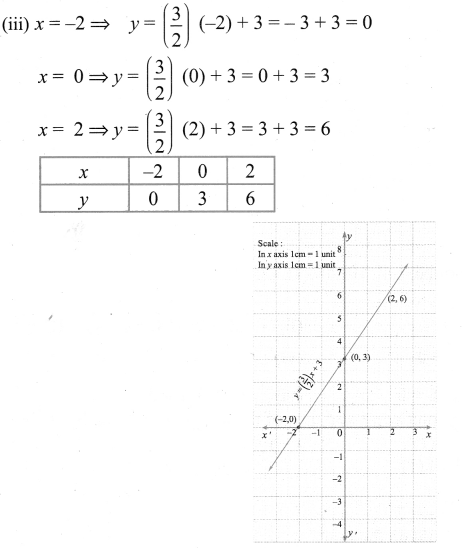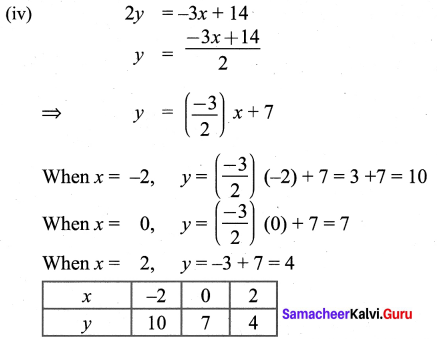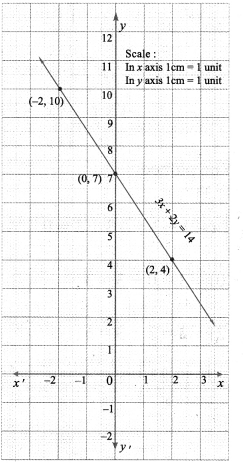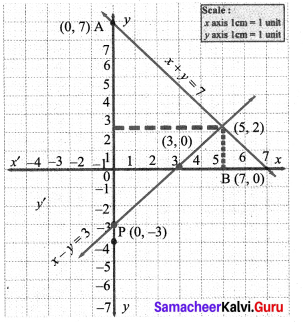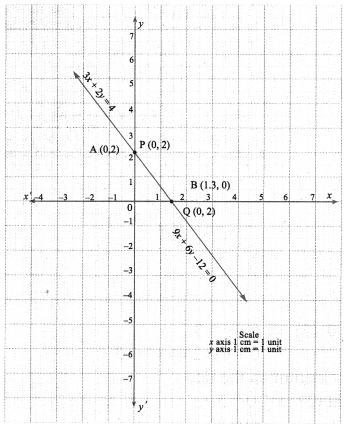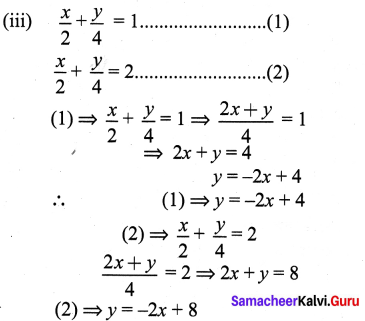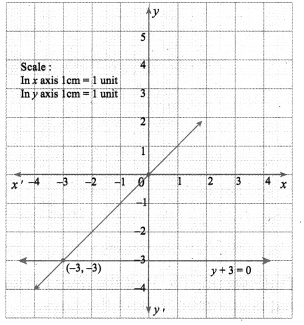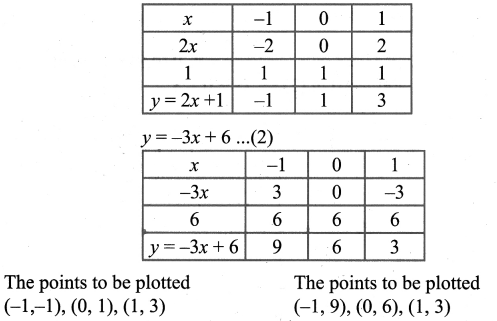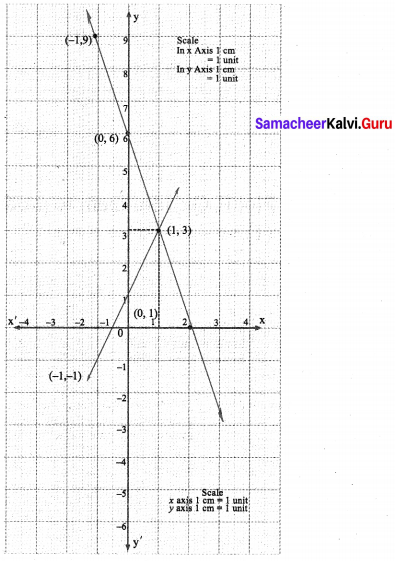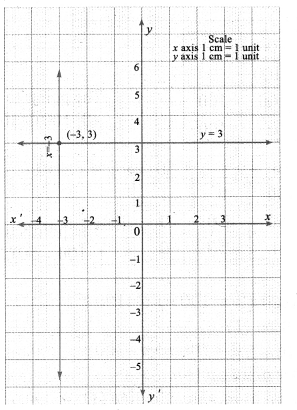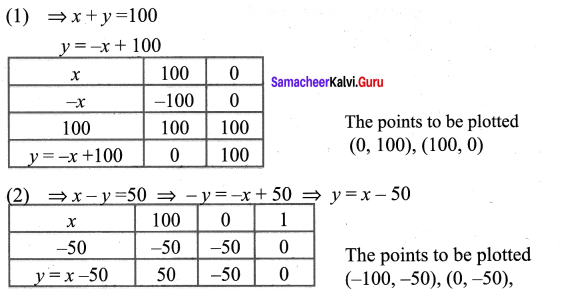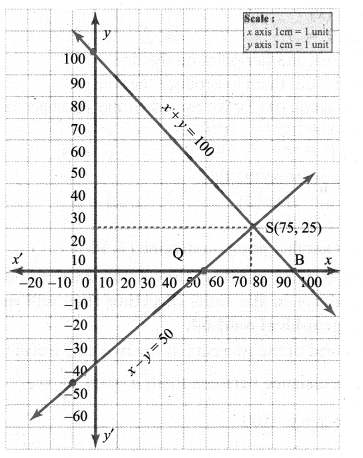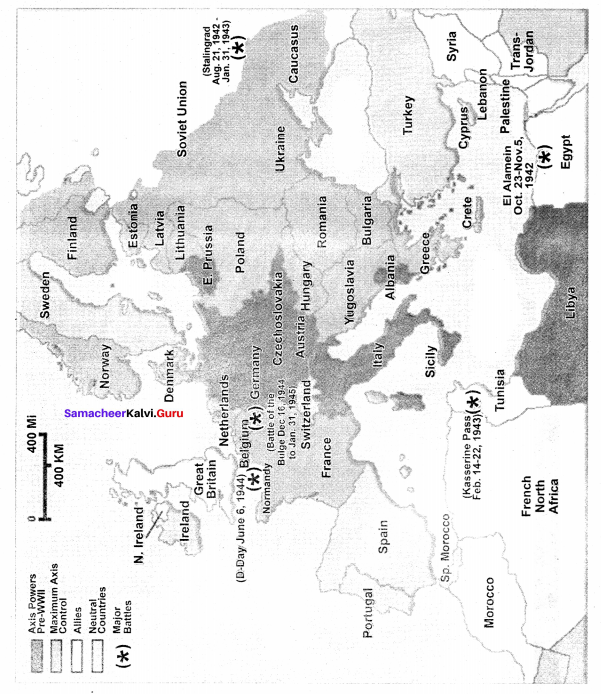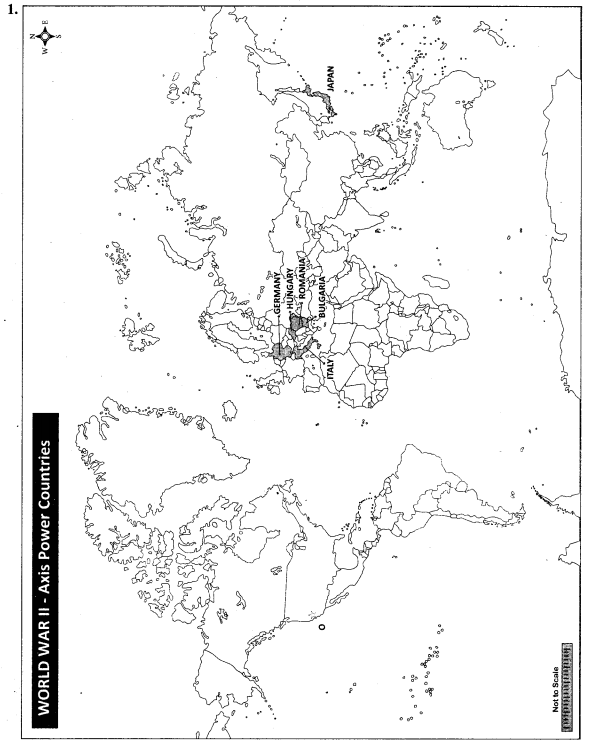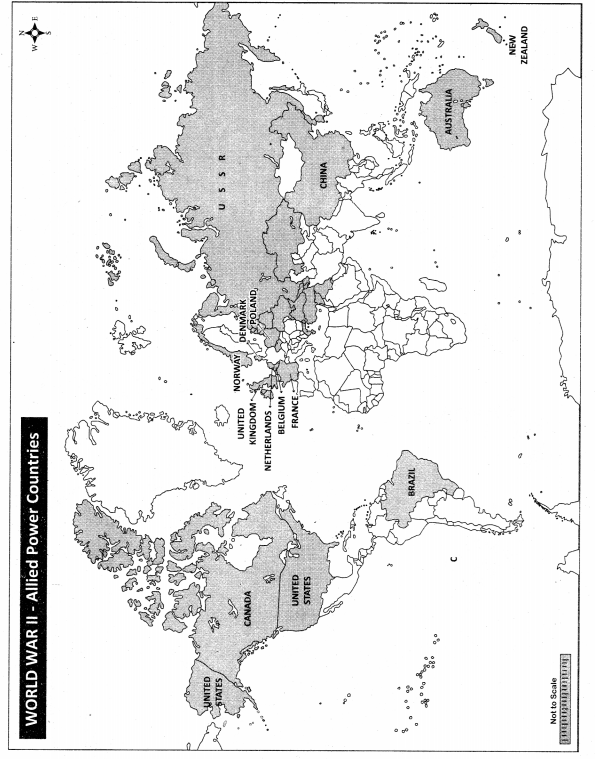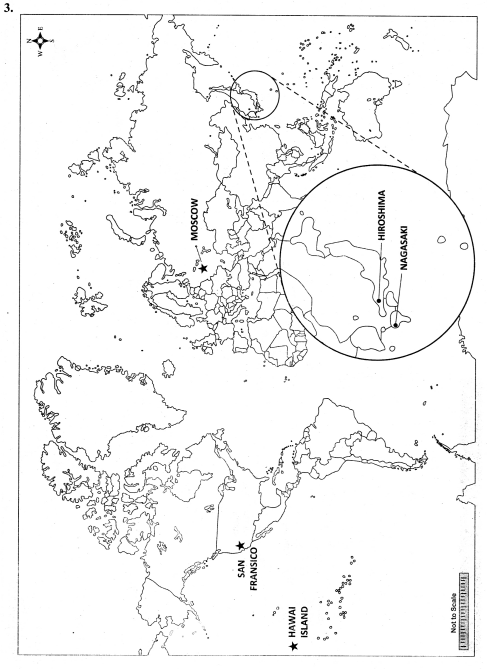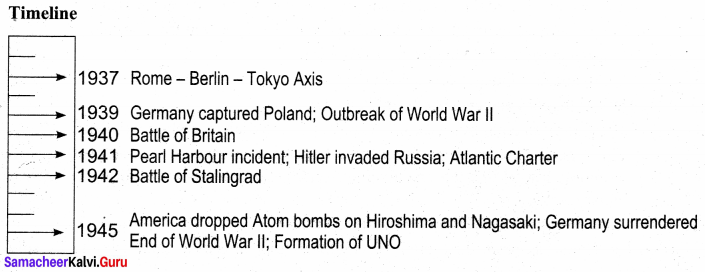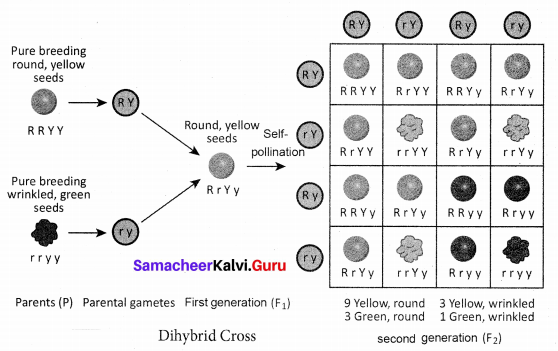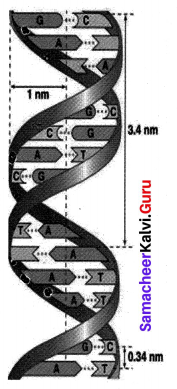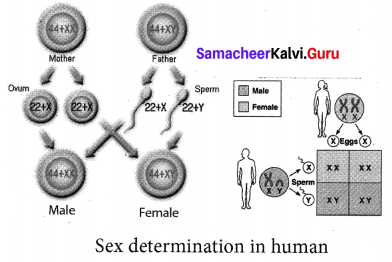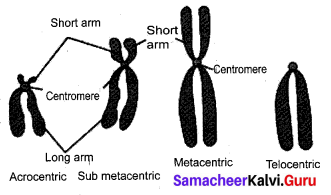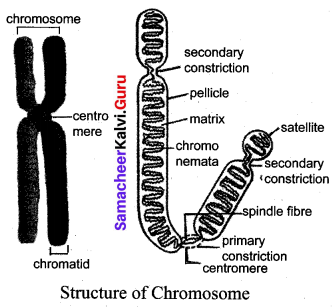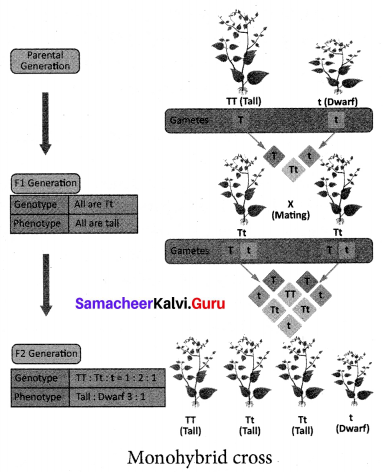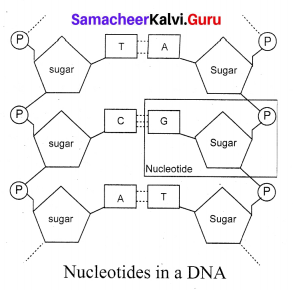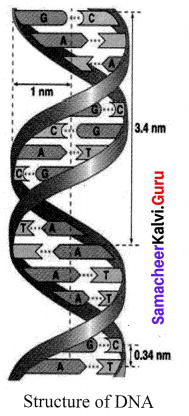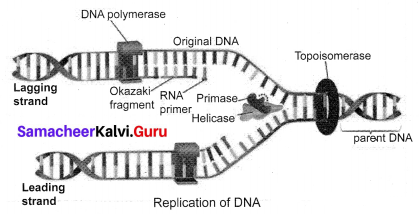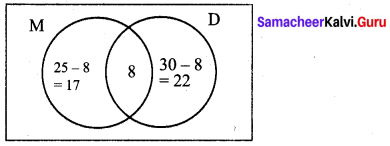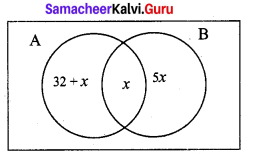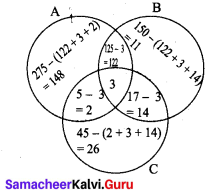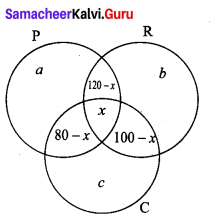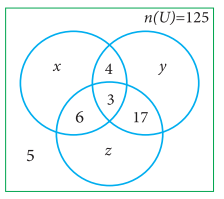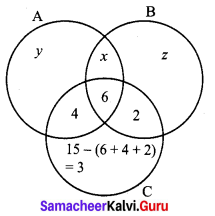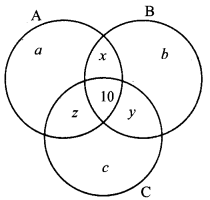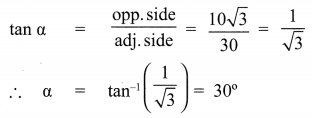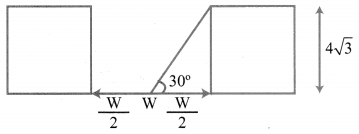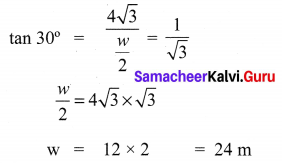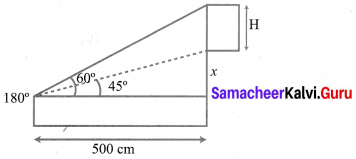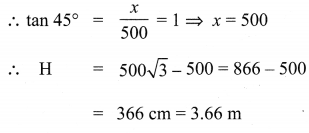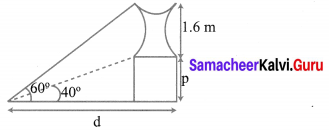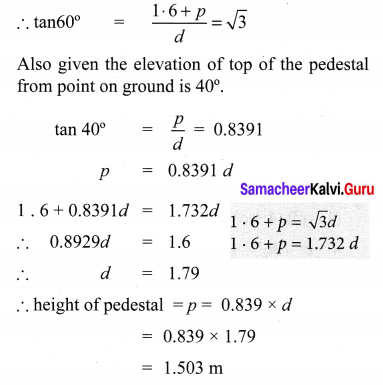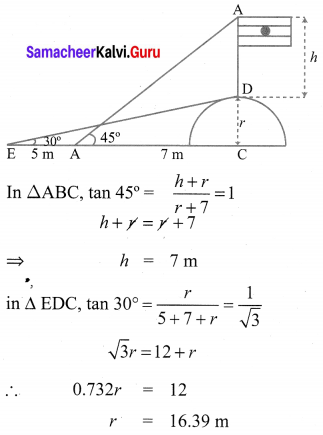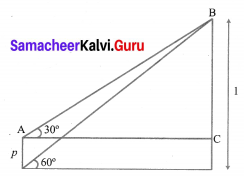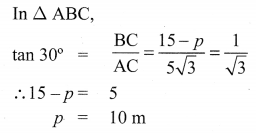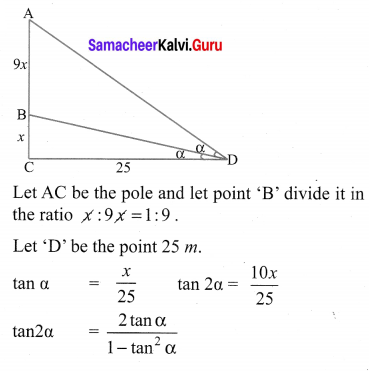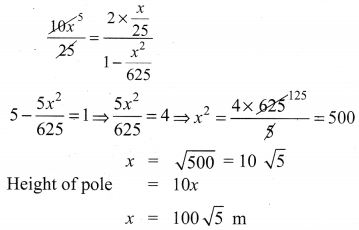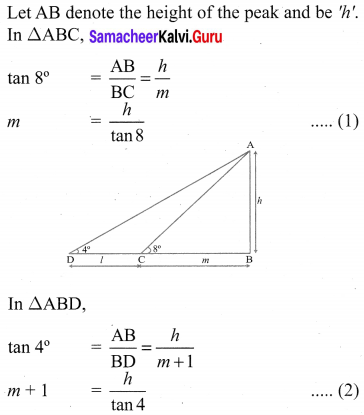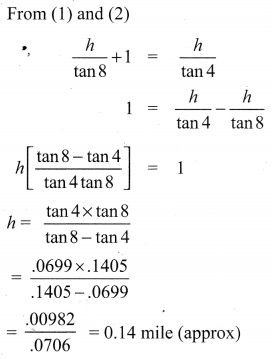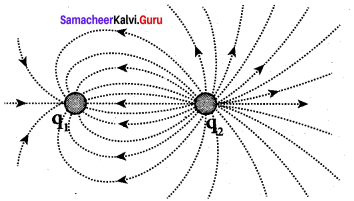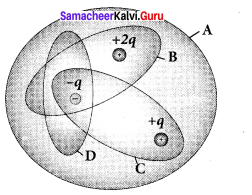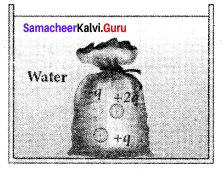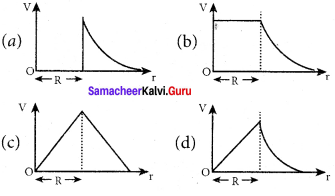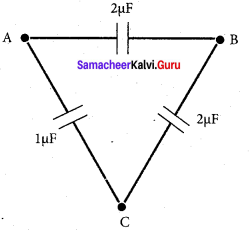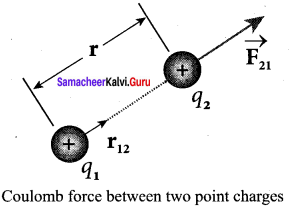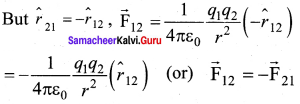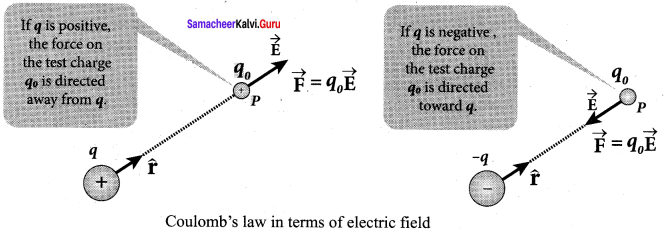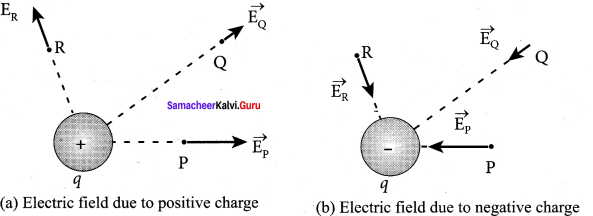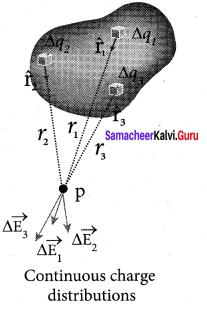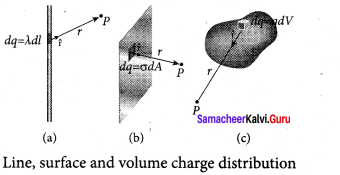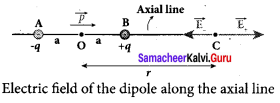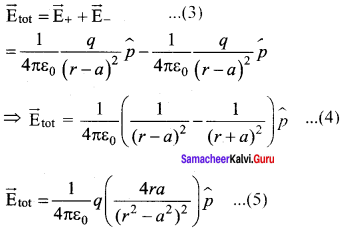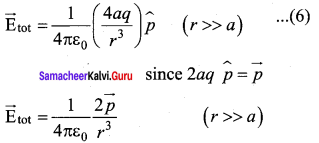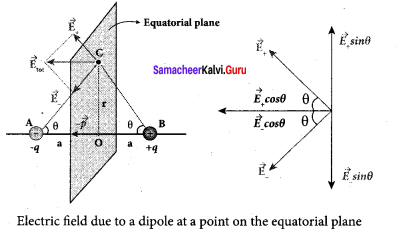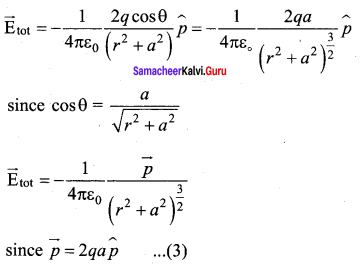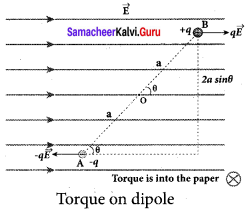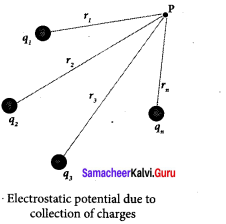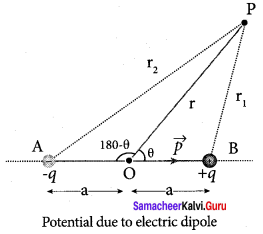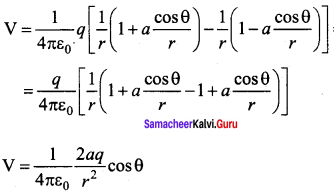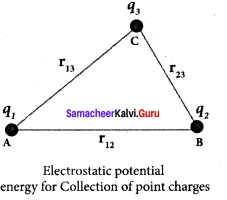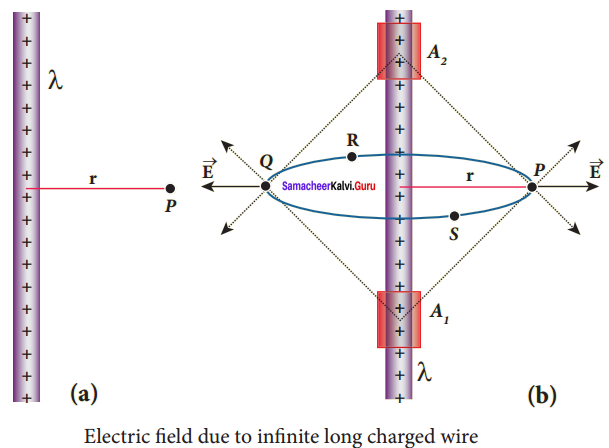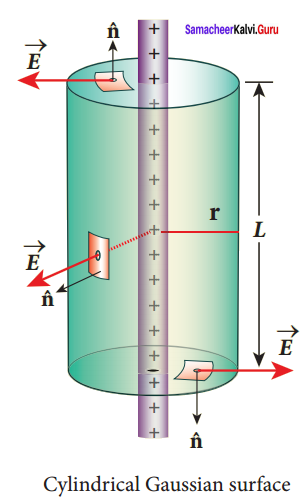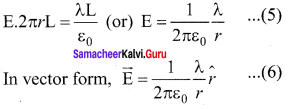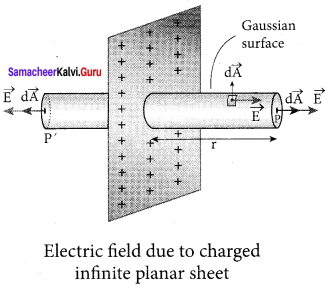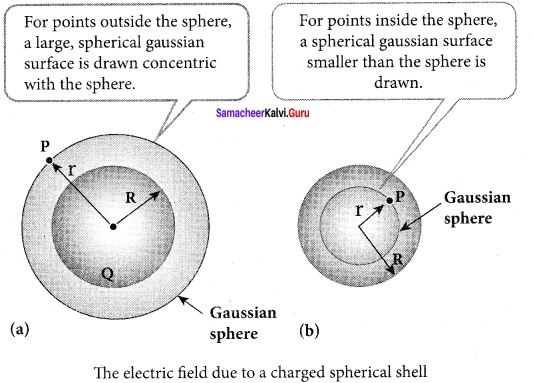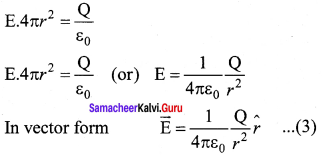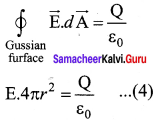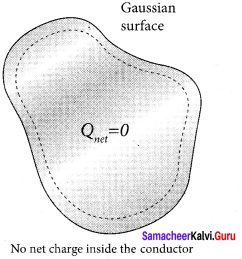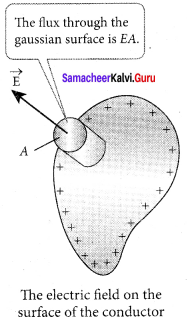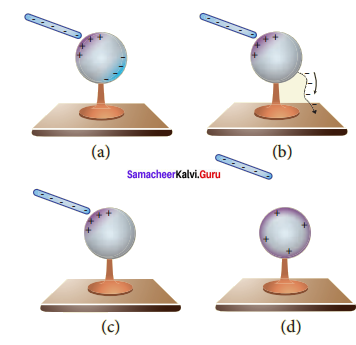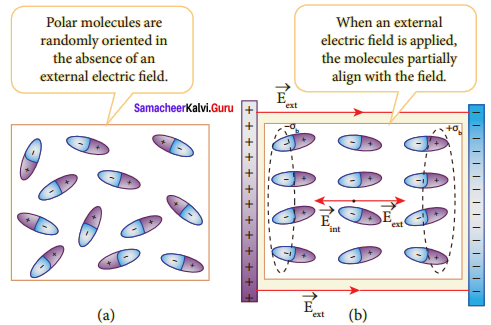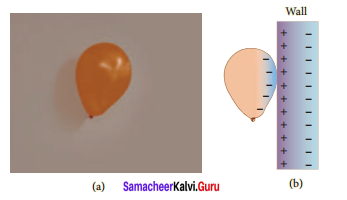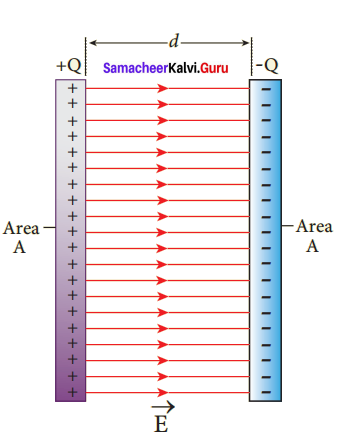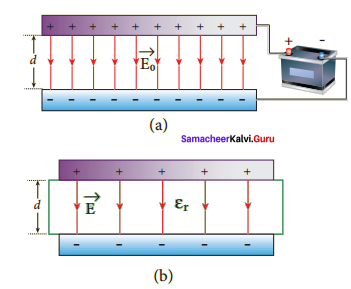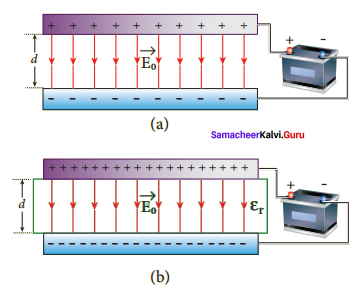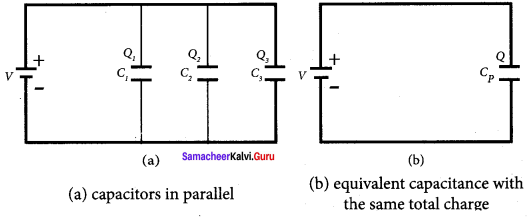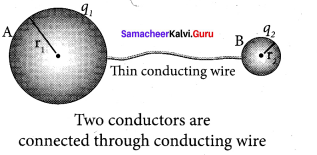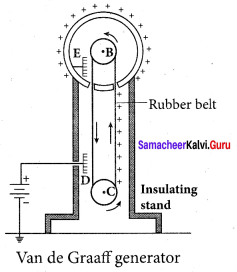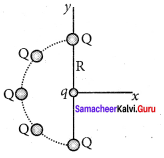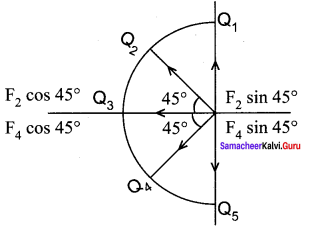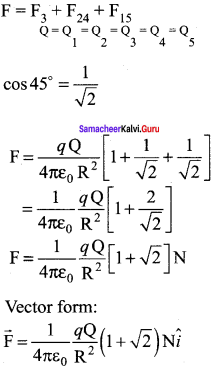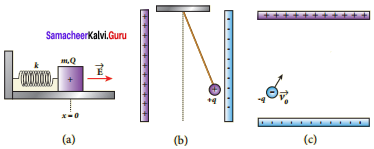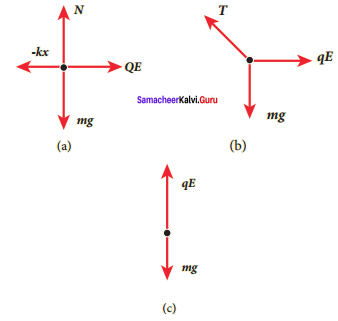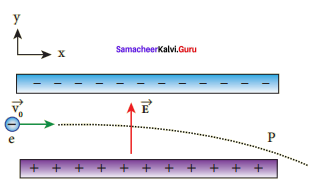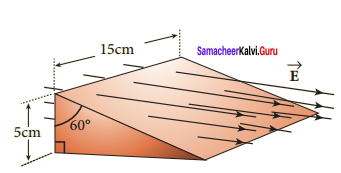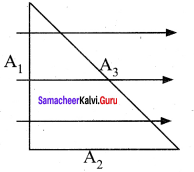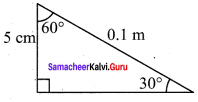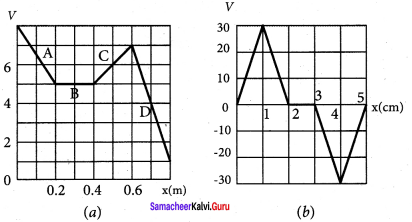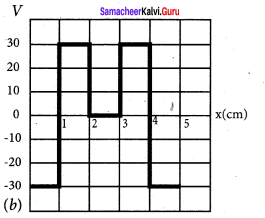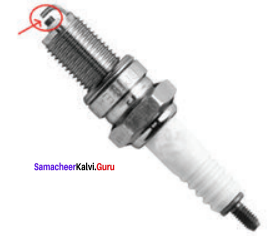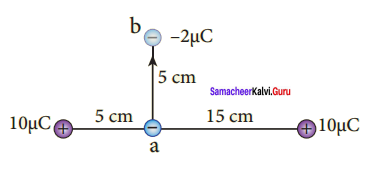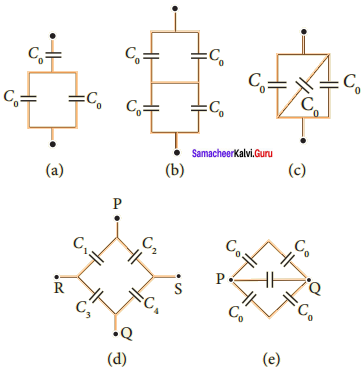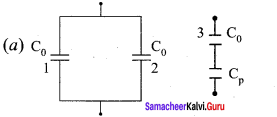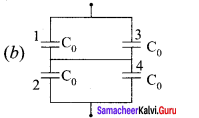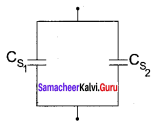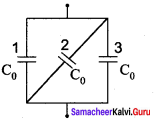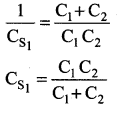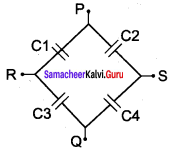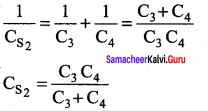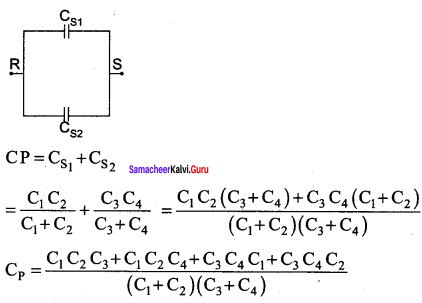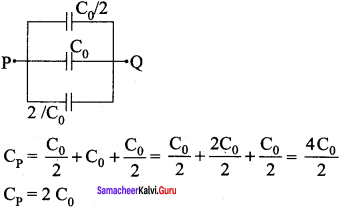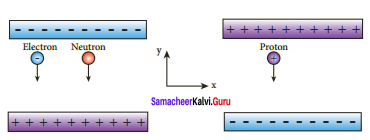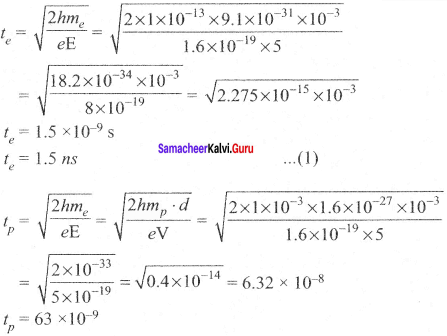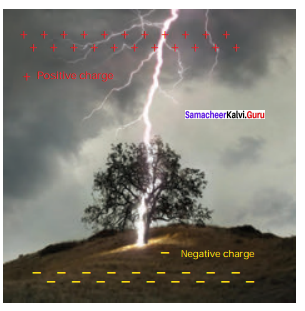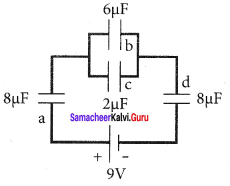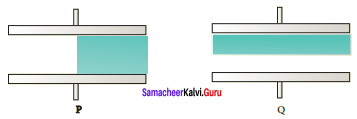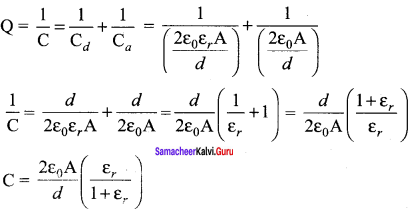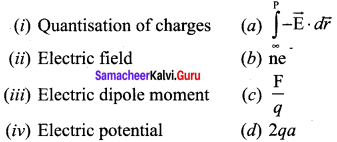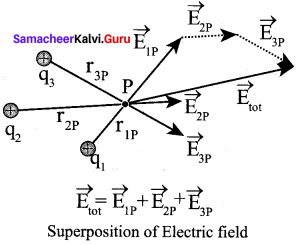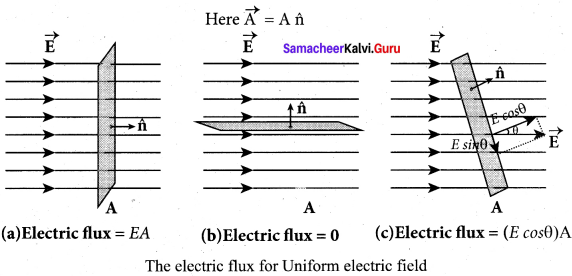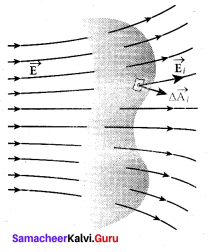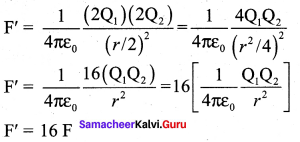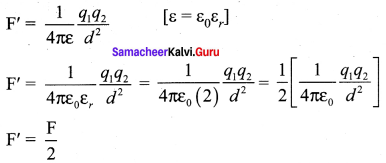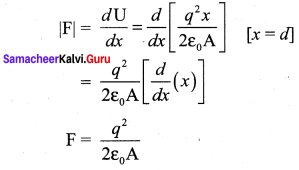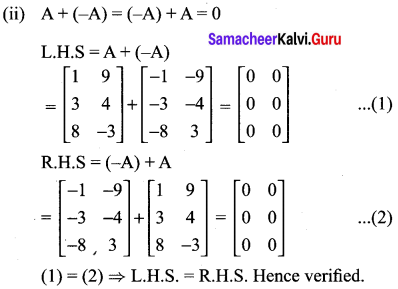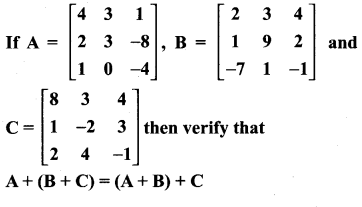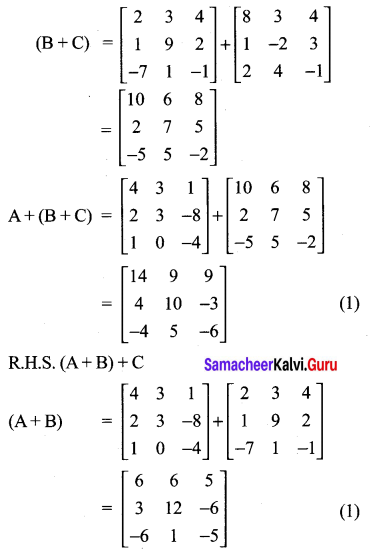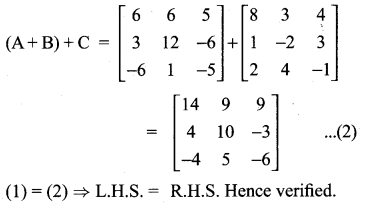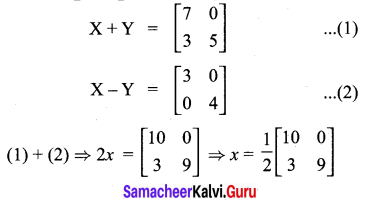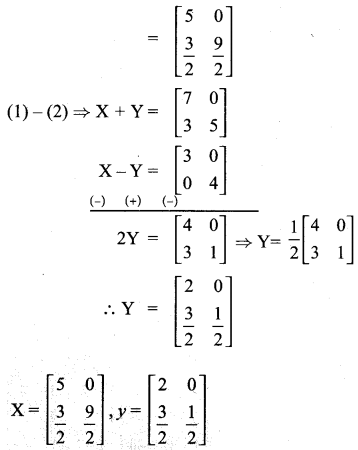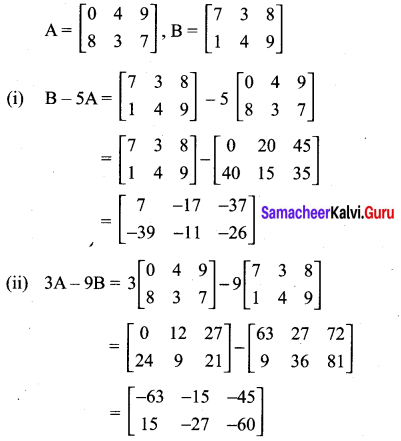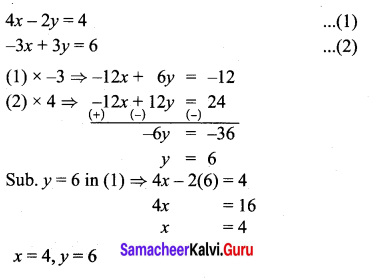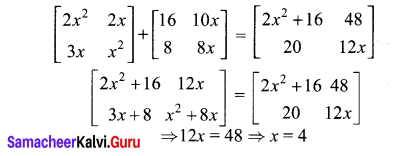Tamilnadu State Board New Syllabus Samacheer Kalvi 8th Tamil Book Solutions Guide Pdf Chapter 3.3 தமிழ்ர் மருந்தும் Text Book Back Questions and Answers, Summary, Notes.
Tamilnadu Samacheer Kalvi 8th Tamil Solutions Chapter 3.3 தமிழ்ர் மருந்தும்
கற்பவை கற்றபின்
Question 1.
நீங்கள் மருத்துவரிடம் கேட்க விரும்பும் ஐந்து வினாக்களை எழுதுக.
Answer:
(i) பல மருந்துகளின் பெயர்களை மருத்துவ நூல்களில் படிக்கின்றோம். ஆனால், அந்த மருந்துகளைப் பார்த்ததே இல்லை. மற்றவர்களுக்கும் தெரிவது இல்லை. அதைத் தெரிந்து கொண்டால் அந்த மருந்துகளின் பயன்பாட்டை நாங்கள் பயன்படுத்த வழி உண்டு. அதற்கு மருத்துவராக விளங்கும் நீங்கள் வழிவகை செய்ய முடியுமா?
(ii) வேதிக்கலப்பு இல்லாத உணவு இன்று குறைவு. அப்படி இருக்கும் போது நோய்கள் விரைவாகவே வந்து விடுகின்றன. இதிலிருந்து மீண்டுவர தாங்கள் கூறும் அறிவுரை யாது?
(iii) பழைய மருத்துவ தாவரங்களை மீட்டுருவாக்கம் செய்ய வழிவகை உள்ளதா?
(iv) நவீன மருத்துவத்தைத் தவிர்த்து நாட்டு மருத்துவத்திற்கு நுழைய அரசு மருத்துவமனையில் பழைய மருத்துவமுறைக்கு வழி உள்ளதா?
(v) தமிழர் மருத்துவத்தைப் பெரும்பாலான தமிழர்களே ஏற்றுக்கொள்ளாத போது, தமிழர் மருத்துவத்தை உலக அளவில் பறைசாற்றுவது எப்படி?
Question 2.
உங்கள் பகுதிகளில் கிடைக்கும் மூலிகைகளின் மாதிரிகளைத் திரட்டி அவற்றின் பயன்களை எழுதிக் காட்சிப்படுத்துக.
Answer:
மாணவர் செயல்பாடு.
பாடநூல் வினாக்கள்
சரியான விடையைத் தேர்ந்தெடுத்து எழுதுக.
Question 1.
தொடக்க காலத்தில் மனிதர்கள் மருத்துவத்திற்கு ………………………… பயன்படுத்தினர்.
அ) தாவரங்களை
ஆ) விலங்குகளை
இ) உலோகங்களை
ஈ) மருந்துகளை
Answer:
அ) தாவரங்களை
Question 2.
தமிழர் மருத்துவத்தில் மருந்து என்பது ……………………… நீட்சியாகவே உள்ளது.
அ) மருந்தின்
ஆ) உடற்பயிற்சியின்
இ) உணவின்
ஈ) வாழ்வின்
Answer:
இ) உணவின்
Question 3.
உடல் எடை அதிகரிப்பதால் ஏற்படும் நோய்களுள் ஒன்று ……………………..
அ) தலைவலி
ஆ) காய்ச்ச ல்
இ) புற்றுநோய்
ஈ) இரத்தக்கொதிப்பு
Answer:
ஈ) இரத்தக்கொதிப்பு
Question 4.
சமையலறையில் செலவிடும் நேரம் ……………………… செலவிடும் நேரமாகும்.
அ) சுவைக்காக
ஆ) சிக்கனத்திற்காக
இ) நல்வாழ்வுக்காக
ஈ) உணவுக்காக
Answer:
இ) நல்வாழ்வுக்காக
குறுவினா
Question 1.
மருத்துவம் எப்போது தொடங்கியது?
Answer:
தொடக்க காலத்தில் மனிதனுக்கு நோய் வந்தபோது இயற்கையாக வளர்ந்த தாவரங்களைக் கொண்டும், அவனுக்கு அருகில் கிடைத்த தாவர, கனிம, சீவப் பொருள்களைக் கொண்டும் நோயைத் தீர்க்க முயன்றிருப்பான். அப்போதே மருத்துவம் தொடங்கியது.
Question 2.
நல்வாழ்விற்கு நாம் நாள்தோறும் செய்ய வேண்டியவை யாவை?
Answer:
- 45 நிமிடத்தில் 3 கி.மீ. நடைப்பயணம்.
- 15 நிமிடம் யோகா, தியானம், மூச்சுப்பயிற்சி.
- 7 மணி நேர தூக்கம்.
- 3 லிட்டர் தண்ணீ ர் அருந்துதல்.
Question 3.
தமிழர் மருத்துவத்தில் மருந்துகளாகப் பயன்படுவன யாவை?
Answer:
மூலிகை, தாவர இலை, தாவர வேர், உலோகங்கள், பாஷாணங்கள், தாதுப்பொருட்கள் ஆகியன தமிழர் மருத்துவத்தில் மருந்துப்பொருட்களாகப் பயன்படுகின்றனவாகும்.
சிறுவினா
Question 1.
நோய்கள் பெருகக் காரணம் என்ன?
Answer:
- மனிதன் இயற்கையை விட்டு விலகி வந்ததுதான் முதன்மைக் காரணம்.
- மாறிப்போன உணவு, மாசு நிறைந்த சுற்றுச்சூழல், மன அழுத்தம் இவை மூன்றும் குறிப்பிடத்தக்க காரணங்கள்.
- தன் உணவுக்காக வேறு எதைப்பற்றியும் கவலை கொள்ளாமல், நிலத்தை உரங்களாலும், பூச்சிக்கொல்லிகளாலும் நச்சுப்படுத்தலாம் என்ற
- அலட்சியமான எண்ணம், மன அழுத்தம், எது கேளிக்கை? எது குதூகலம்? எது படிப்பு? எது சிந்தனை? என்ற புரிதல் இல்லாமை ஆகியவற்றைக் கூடுதல் காரணங்களாகச் சொல்லலாம்.
- நம்முடைய வாழ்வியலைச் செம்மைப்படுத்துவதற்காக நாம் அறிவியல் அறிவை, மேம்பட்ட அறிவை வளர்த்தோம். ஆனால் நுண்ணறிவைத் தொலைத்துவிட்டோம்.
- இயற்கையோடு இயைந்து வாழலாம் என்கிற அறிவை நாம் மறந்துவிட்டோம். இதுவே இன்றைக்குப் பல நோய்கள் பெருக மிக முக்கியமான காரணம் ஆகும்.
Question 2.
பள்ளிக் குழந்தைகளுக்கு மருத்துவர் கூறம் அறிவுரைகள் யாவை?
Answer:
- நோய் வந்த பின்பு மருத்துவமனைக்குச் செல்வதை விட வருமுன் காக்கும் வாழ்க்கையை வாழக் கற்றுக் கொள்ளுங்கள்.
- சரியான உணவு, சரியான உடற்பயிற்சி, சரியான தூக்கம் ஆகிய மூன்றும் உங்களை நலமாக வாழவைக்கும்.
- விலை உயர்ந்த உணவுதான் சரியான உணவு என்று எண்ணாதீர்கள்.
- எளிமையாகக் கிடைக்கக்கூடிய காய்கறிகள், கீரைகள், பழங்கள், சிறுதானியங்களை உணவில் சேர்த்துக் கொள்ளுங்கள்.
- கணினித் திரையிலும், கைபேசியிலும் விளையாடுவதைத் தவிர்த்து நாள்தோறும் ஓடியாடி விளையாடுங்கள்.
- இரவுத் தூக்கம் மிகவும் இன்றியமையாதது. உரிய நேரத்தில் உறங்கச் செல்லுங்கள். அதிகாலையில் விழித்தெழுங்கள் உங்களை எந்த நோயும் அண்டாது.
நெடுவினா
Question 1.
தமிழர் மருத்துவத்தின் சிறப்புகளாக மருத்துவர் கூறும் செய்திகளைத் தொகுத்து எழுதுக.
Answer:
(i) வேர்பாரு; தழைபாரு மிஞ்சினக்கால் பற்பசெந்தூரம் பாரே’ என்றனர் சித்தர்கள்.
(ii) வேர், தழையால் குணம் அடையாதபோது சில நாட்பட்ட நோய்களுக்கு, தாவரங்கள் மட்டும் அல்லாமல் உலோகங்களையும் பாஷாணங்களையும் சித்த மருந்துகளாக நம் முன்னோர்கள் பயன்படுத்தியிருக்கிறார்கள்.
(iii) அந்தக் காலத்தில் எப்படி மூலிகைகளை மருந்தாகப் பார்த்தார்களோ அப்படியே தாதுப்பொருட்களையும், உலோகத்தையும் பார்த்தார்கள்.
(iv) அவற்றை மருந்துகளாக மாற்றும் வல்லமை சித்தமருத்துவத்தில் இருந்திருக்கிறது.
(v) ஒரு மருந்தை எடுத்துக்கொண்டால் அதற்கு விளைவும் இருக்கும்; பக்கவிளைவும் இருக்கும். ஆனால் தமிழர் மருத்துவத்தில் பக்க விளைவுகள் இல்லை. அதற்குக் காரணம் மருந்து என்பதே உணவின் நீட்சியாக இருக்கிறது.
(vi) ஒரு கவளம் சோற்றை உடல் எப்படி எடுத்துக்கொள்கிறதோ, அப்படியே தான் சித்த மருத்துவத்தின் லேகியத்தையும், சூரணத்தையும் உடல் எடுத்துக்கொள்ளும்.
(vii) அதனால் உணவு எப்படி பக்கவிளைவுகளைத் தருவதில்லையோ அதே போலச் சித்த மருந்துகளும் பக்கவிளைவுகளை ஏற்படுத்துவதில்லை.
(viii) தமிழர் மருத்துவத்தின் சிறப்பு என்னவென்றால், தனித்துவமான பார்வை இதன் முதல் சிறப்பு; இரண்டாவது சூழலுக்கு இசைந்த மருத்துவம் இது. இந்த மருத்துவத்தின் பயன்பாடோ, மூலக்கூறுகளோ, மருந்துகளோ சுற்றுச்சூழலைச் சிதைக்காது.
(ix) மிக முக்கியமான சிறப்பு என்னவென்றால், நோய்க்கான சிகிச்சையை மட்டும் சொல்லாமல், நோய் மீண்டும் வராமலிருப்பதற்கான வாழ்வியலையும் சொல்கிறது.
(x) அதாவது நோய்நாடி நோய் முதல் நாடி’ என்ற திருக்குறளின்படி நோயை மட்டுமன்றி, அதன் காரணிகளையும் கண்டறிந்து ஒருவரை நோயில்லாத மனிதராக்குகிறது.
சிந்தனை வினா
Question 1.
நோயின்றி வாழ நாம் என்னென்ன வழிகளைக் கையாளலாம்?
Answer:
இயற்கையோடு இணைந்து உண்ணல்:
மனிதனின் அடிப்படைத் தேவைகளுள் முதன்மையானது உணவு. மக்கள் உண்ணும் உணவும் உணவுப் பழக்கவழக்கங்களுமே அவர்களது உடல் நலத்தையும் உள நலத்தையும் தீர்மானிக்கின்றன. தமிழர் மருத்துவத்தில் உணவு என்பது அனைத்து நோய்களையும் தீர்க்கக் கூடிய சஞ்சீவி மருந்தாகக் கருதப்படுகிறது.
உண்ணும் முறை :
எளிதில் செரிக்கக் கூடிய பழம், காய், பருப்பு, அரிசி, கோதுமை, பால் இவற்றையே குடல் ஏற்றுக் கொள்கிறது. நாச்சுவை கருதி உண்ணாமல், உடல் நலங்கருதி உண்ணுதலே நல்லது. உணவை விரைவாக விழுங்கக்கூடாது; நன்றாக மென்று விழுங்குதல் வேண்டும்.
பயிற்சிகள் :
தினமும் நாற்பத்தைந்து நிமிடத்தில் மூன்று கி.மீ. நடைப்பயணம், பதினைந்து நிமிடம் யோகா, தியானம், மூச்சுப்பயிற்சி, ஏழு மணிநேர தூக்கம், மூன்று லிட்டர் தண்ணீ ர் அருந்துவது அவசியம்.
தவிர்க்க வேண்டியன:
நோய்க்கு முதல் காரணம் உப்பு. இதனைக் குறைவாக சேர்த்தல் நன்று. உப்பு நிறைந்த பொருள்களான ஊறுகாய், அப்பளம், வடகம், கருவாடு, வறுத்த முந்திரிபருப்பு, வறுத்த உருளைச் சீவல், வாழைக்காய்ச் சீவல், புளித்த மோர் முதலியனவற்றை முழுவதுமாகத் தவிர்த்தல் வேண்டும். கொழுப்பு நிறைந்த இறைச்சிகள், முட்டையின் மஞ்சள் கரு, தயிர், நெய், வெண்ணெய், பாலாடை, பனிக்கூழ், இனிப்புக்கட்டி ஆகியவற்றை நீக்குதல் வேண்டும்.
சமச்சீர் உணவு :
‘உணவே மருந்து மருந்தே உணவு’ என்று வாழ்ந்தவர்கள் நம் முன்னோர்கள். ஒருவர் உட்கொள்ளும் உணவில் புரதம், கொழுப்பு, மாச்சத்து, கனிமங்கள், நுண்ணூட்டச் சத்துகள் சேர்ந்ததே சமச்சீர் உணவு. எனவே, அளவறிந்து உண்ண வேண்டியது அவசியமாகும்.
கூடுதல் வினாக்கள்
சரியான விடையைத் தேர்ந்தெடுத்து எழுதுக.
Question 1.
அருந்தும் உணவே அருமருந்தென அறிந்தவர் ………………………… மக்கள்.
அ) கேரள
ஆ) தெலுங்கு
இ) தமிழ்
ஈ) கர்நாடகம்
Answer:
இ) தமிழ்
Question 2.
………………….. மக்கள் உடற்கூறு பற்றிய அறிவிலும், மருத்துவம் பற்றிய புரிதலிலும் சிறந்து விளங்கினர்.
அ) தமிழ்
ஆ) சீனா
இ) ஆங்கிலேயர்
ஈ) கேரளம்
Answer:
அ) தமிழ்
Question 3.
தமிழர் மருத்துவம் ………………………. என்று அழைக்கப்படுகிறது.
அ) ஹோமியோபதி
ஆ) அலோபதி
இ) அக்குபஞ்சர்
ஈ) சித்த மருத்துவம்
Answer:
ஈ) சித்த மருத்துவம்
Question 4.
உடலை வளப்படுத்தி உள்ளத்தைச் சீராக்குவது …………………… கலை.
அ) நாட்டியம்
ஆ) ஓவியம்
இ) உடற்பயிற்சி
ஈ) யோகனம்
Answer:
ஈ) யோகனம்
Question 5.
தமிழர் ………………………. சாங்கியம், ஆசீவகம் ஆகும்.
அ) மெய்யியல்
ஆ) வரலாறு
இ) அறிவியல்
ஈ) தத்துவங்கள்
Answer:
ஈ) தத்துவங்கள்
Question 6.
…………………. மற்றும் ……………………. காலத்தில் அந்தந்த மதங்களின் கூறுகள் நம் மருத்துவத்தில் இருந்தன.
அ) இந்து, முஸ்லிம்
ஆ) சைவம், வைணவம்
இ) இந்து, சமணம்
ஈ) சமணம், பௌத்தம்
Answer:
ஈ) சமணம், பௌத்தம்
Question 7.
………………………….. களுடைய நவீன அறிவியல் பார்வை நம்மீது தாக்கத்தை ஏற்படுத்தியது.
அ) பாரசீகர்கள்
ஆ) ஆங்கிலேயர்கள்
இ) ஆரியர்கள்
ஈ) முகலாயர்கள்
Answer:
ஆ) ஆங்கிலேயர்கள்
Question 8.
‘வேர்பாரு; தழைபாரு மிஞ்சினக்கால் பற்பசெந்தூரம் பாரே’ என்றனர் ……………………….
அ) தமிழர்கள்
ஆ) சித்தர்கள்
இ) சைவர்கள்
ஈ) முன்னோர்கள்
Answer:
ஆ) சித்தர்கள்
Question 9.
நாட்பட்ட நோய்களுக்கு, தாவரங்கள் மட்டும் அல்லாமல் ……………………….. களையும் பயன்படுத்தினர்.
அ) உலோகங்கள்
ஆ) அலோகங்கள்
இ) சாயங்கள்
ஈ) வேதியல்
Answer:
அ) உலோகங்கள்
Question 10.
தாதுப்பொருட்களையும், உலோகத்தையும் மருந்துகளாக மாற்றும் வல்லமை …………………….. மருத்துவத்தில் இருந்திருக்கிறது.
அ) நவீன
ஆ) மூலிகை
இ) சித்த
ஈ) சீன
Answer:
இ) சித்த
Question 11.
‘நோய்நாடி நோய் முதல்நாடி’ என்று கூறியவர் ………………………
அ) கம்பர்
ஆ) வள்ளுவர்
இ) ஔவையார்
ஈ) திருமூலர்
Answer:
ஆ) வள்ளுவர்
Question 12.
தினமும் ………………………… நிமிடத்தில் மூன்று கி.மீ. நடைப்பயணம் மேற்கொள்ள வேண்டும்.
அ) 25
ஆ) 30
இ) 40
ஈ) 45
Answer:
ஈ) 45
Question 13.
தினமும் …………………… நிமிடம் யோகா செய்ய வேண்டும்.
அ) 10
ஆ) 15
இ) 20
ஈ) 25
Answer:
ஆ) 15
Question 14.
தினமும் …………………… மணிநேரம் தூங்குவது அவசியம்.
அ) 7
ஆ) 8
இ) 6
ஈ) 5
Answer:
அ) 7
Question 15.
தினமும் ………………… லிட்டர் தண்ணீ ர் அருந்துவது அவசியம்.
அ) 5
ஆ) 4
இ) 2
ஈ) 3
Answer:
ஈ) 3
Question 16.
கணினித்திரையிலும் கைபேசியிலும் விளையாடுவதைத் தவிர்த்து நாள்தோறும் ………………………….. விளையாடுங்கள்.
அ) கபடி
ஆ) நொண்டி
இ) ஓடியாடி
ஈ) செஸ்
Answer:
இ) ஓடியாடி
பிரித்து எழுதுக
மருந்தென = மருந்து + என
உடற்கூறுகள் = உடல் + கூறுகள்
தங்களுக்கென = தங்களுக்கு + என
வந்துள்ளோம் = வந்து + உள்ளோம்
முயன்றிருப்பான் = முயன்று + இருப்பான்
அறிந்திருப்பர் = அறிந்து + இருப்பர்
பழந்தமிழர் = பழமை + தமிழர்
வளப்படுத்தி = வளம் + படுத்தி
மருந்தில்லா = மருந்து + இல்லா
இவற்றுக்கெல்லாம் = இவற்றுக்கு + எல்லாம்
கண்டறிந்து = கண்டு + அறிந்து
வாழ்வியலுடன் = வாழ்வியல் + உடன்
துரிதமாக = துரிதம் + ஆக
மாறிப்போனது = மாறி + போனது
ஒளிந்திருக்கும் = ஒளிந்து + இருக்கும்
சேர்த்தெழுதுக
இரத்தம் + கொதிப்பு = இரத்தக்கொதிப்பு
உடல் + பயிற்சி = உடற்பயிற்சி
அவசியம் + ஆயிற்று = அவசியமாயிற்று
நாள் + பட்ட = நாட்பட்ட
மீண்டு + எழுந்து = மீண்டெழுந்து
என்று + எல்லாம் = என்றெல்லாம்
பட்டியல் + இட்டு = பட்டியலிட்டு
சுற்று + சூழல் = சுற்றுச்சூழல்
மட்டும் + அன்றி = மட்டுமன்றி
மற்று + ஒரு = மற்றொரு
உணவுக்கு + ஆக = உணவுக்காக
நுண் + அறிவு = நுண்ணறிவு
சரி + அன்று = சரியன்று
சமையல் + அறை = சமையலறை
விழித்து + எழுங்கள் = விழித்தெழுங்கள்
குறுவினா
Question 1.
பாடப்பகுதியில் வள்ளுவர் மருந்து பற்றிய குறளாக குறிப்பிடுவது எது?
Answer:
‘மருந்தென வேண்டாவாம் யாக்கைக்கு அருந்தியது
அற்றது போற்றி உணின்’ என்கிறார் வள்ளுவர்.
Question 2.
பாரம்பரிய மருத்துவ முறையில் தமிழ் மக்கள் எவ்வாறு சிறந்திருந்தனர்?
Answer:
- தமிழ்மக்கள் உடற்கூறுகள் பற்றிய அறிவிலும், மருத்துவம் பற்றிய புரிதலிலும் சிறந்து விளங்கினர்.
- உலகில் பல்வேறு மருத்துவ முறைகள் இருந்தாலும் தங்களுக்கெனப் பாரம்பரிய மருத்துவ முறைகளையும் உருவாக்கிப் பின்பற்றி வந்தனர்.
Question 3.
பழந்தமிழரின் மருத்துவம் பற்றிய குறிப்புகள் எவற்றில் கிடைக்கின்றன?
Answer:
பழந்தமிழர்கள் மருத்துவத்தை அறிந்தது மட்டுமன்றி மருத்துவத்தில் சிறந்தும் விளங்கினார்கள் என்பதற்கான குறிப்புகள் பழந்தமிழ் இலக்கியங்களில் கிடைக்கின்றன.
Question 4.
பழந்தமிழர்கள் அறிந்திருந்த மருத்துவ முறைகள் யாவை?
Answer:
பழந்தமிழர்கள், மூலிகை மருத்துவம், அறுவை மருத்துவம், மருந்தில்லா மருத்துவம் போன்றவற்றையும் உடலை வளப்படுத்தி உள்ளத்தைச் சீராக்கும் யோகம் முதலிய
கலைகளையும் அறிந்திருந்தார்கள்.
Question 5.
தமிழர் எவ்வுண்மையை விளக்கினர்?
Answer:
நோயை இயற்கையில் கிடைக்கும் பொருட்கள், அப்பொருளின் தன்மை அதன் சுவை இவற்றைக் கொண்டே குணப்படுத்த முடியும் என்ற உண்மையை மிகத்தெளிவாக விளக்கினர்.
Question 6.
தமிழர் மருத்துவத்தின் முக்கியச் சிறப்பு என்ன?
Answer:
(i) தமிழர் மருத்துவத்தின் மிக முக்கியமான சிறப்பு என்னவென்றால், நோய்க்கான சிகிச்சையை மட்டும் சொல்லாமல், நோய் மீண்டும் வராமலிருப்பதற்கான வாழ்வியலையும் சொல்கிறது.
(ii) அதாவது நோய்நாடி நோய் முதல் நாடி’ என்ற குறளின்படி நோயை மட்டுமன்றி அதன் காரணிகளையும் கண்டறிந்து ஒருவரை நோயில்லாத மனிதராக்குகிறது.
Question 7.
இன்று நோய்கள் பெருகுவதற்கான மூன்று காரணங்கள் யாவை?
Answer:
- மனிதன் இயற்கையை விட்டு விலகி வந்ததுதான் முதன்மைக் காரணம்.
- மாறிப்போன உணவு, மாசு நிறைந்த சுற்றுச்சூழல், மன அழுத்தம் இவை மூன்றும் குறிப்பிடத்தக்க காரணங்கள்.
சிறுவினா
Question 1.
தமிழர் மருத்துவ முறைகள் எவ்வாறு பரிணாம வளர்ச்சி அடைந்தது?
Answer:
(i) தமிழரது நிலம், நிறைந்த பண்பாடுகளும் தத்துவங்களும் அடங்கியது.
(ii) நோய்கள் எல்லாம் பேய், பிசாசுகளால் வருகின்றன; பாவ, புண்ணியத்தால் வருகின்றன என்று உலகத்தின் பல பகுதிகளில் சொல்லிக் கொண்டிருந்த காலத்தில், தமிழர் தத்துவங்களான சாங்கியம், ஆசீவகம் போன்றவை உடலுக்கும் ஏற்படும் மாற்றங்களை விளங்கின.
(iii) நோயை இயற்கையில் கிடைக்கும் பொருட்கள், அப்பொருள்களின் தன்மை அதன் சுவை இவற்றைக் கொண்டே குணப்படுத்த முடியும் என்ற உண்மையை மிகத் தெளிவாக விளக்கினர்.
(iv) தமிழர் மருத்துவம் பண்பாட்டுக் கூறாக ஆகும்போது நாட்டு வைத்தியமாகவும், பாட்டி வைத்தியமாகவும் மரபு சார்ந்த சித்த வைத்தியமாகவும், உணவு சார்ந்த
மருத்துவமாகவும், பண்பாடு சார்ந்த மருத்துவமாகவும் விரிந்திருக்கிறது.
Question 2.
உயர்வாக இருந்த தமிழர் மருத்துவமுறை பிறகு பின்தங்கிப் போனதற்குக் காரணம் என்ன ?
Answer:
- நம்மீது நிகழ்ந்த படையெடுப்புகள் தாக்கத்தை ஏற்படுத்தின.
- தமிழர் மருத்துவம் அவரவர்வாழ்வியலுடனும், தத்துவங்களுடனும் பிணைந்துதான் வந்து கொண்டிருந்தது.
- சமணர் மற்றும் பௌத்தர் காலத்தில் அந்தந்த மதங்களின் கூறுகள் நம் மருத்துவத்தில் இருந்தன. பிறகு சைவம் ஓங்கிய போது சைவ சித்தாந்தத்தின் கூறுகள் கலந்தன.
- இறுதியில் ஆங்கிலேயர்கள் வந்தனர். அவர்களுடைய நவீன அறிவியல் பார்வை நம்மீது தாக்கத்தை ஏற்படுத்தியது.
- சித்த மருத்துவம் என்பது மரபுவழி மருத்துவமாகவும், நாட்டு மருத்துவமாகவும் சுருங்கியது. இறுதியில் கிராமம் சார்ந்த மருத்துவமாக மாறிப்போனது.
- நவீன மருத்துவத்தில், துரிதமாகச் சில நோய்களுக்குக் கிடைத்த தீர்வுகள் பெரும்பயனையும் வரவேற்பையும் கொடுத்தன.
Question 3.
தமிழர் மருத்துவம் மறுமலர்ச்சி அடைவதற்கான காரணங்கள் யாவை?
Answer:
(i) பல ஆண்டுகளுக்குப் பின்னால் தான் பாரம்பரிய மருத்துவம் மிகப்பெரிய அனுபவத்தின் நீட்சி என்பதும் மிகப்பெரிய பட்டறிவில் ஒரு பெரிய அறிவியல் கண்டிப்பாக ஒளிந்திருக்கும் என்பதும் புரியத் தொடங்கின. குறிப்பாகச் சர்க்கரை, இரத்தக்கொதிப்பு, புற்றுநோய், மாரடைப்பு முதலிய வாழ்வியல் நோய்கள் பெருகிய நிலையைச் சொல்லலாம்.
(ii) இவற்றைத் தீர்க்க வெறும் இரசாயன மருந்துகள் போதா. கூடவே உணவு, வாழ்வியல், உடற்பயிற்சி, யோகம் இவையும் கூட்டாக மேற்கொள்ளப்பட வேண்டும்.
(iii) தொடர் சிகிச்சைக்குப் பிற பக்க விளைவுகள் இல்லா மருந்துகளின் தேவை அவசியமாயிற்று. அதன் பிறகுதான் எல்லா நாடுகளிலும் இருக்கும் பாரம்பரிய மருத்துவ முறைகளின் மீது, நவீன அறிவியல் பார்வை விழத் தொடங்கியது.
(iv) அதனால் சித்த மருத்துவத்தின் தொன்மையும், தமிழர்களின் தொன்மையும் புரிய ஆரம்பித்தன் ஆய்வுகள் மேற்கொள்ளப்பட்டன.
(v) நாட்பட்ட நோய்களுக்கு மட்டுமல்லாது புதிய தொற்றுநோய் மாதிரியான சவால்களுக்கும் இது சிறந்த மாற்றாக இருப்பது தெரிய வந்தது.
(vi) இன்றைக்குப் பெருவாரியாக இது மீண்டெழுந்து வந்து கொண்டிருக்கிறது.
Question 4.
மருத்துவத்தில் பக்கவிளைவுகள் பற்றி மருத்துவர் கூறிய கருத்துகள் யாவை?
Answer:
(i) ஒரு மருந்தை எடுத்துக்கொண்டால் அதற்கு விளைவும் இருக்கும்; பக்க விளைவும் இருக்கும். ஆனால், தமிழர் மருத்துவத்தில் பக்க விளைவுகள் இல்லை . அதற்குக் காரணம் மருந்து என்பதே உணவின் நீட்சியாக இருக்கிறது.
(ii) ஒரு கவளம் சோற்றை உடல் எப்படி எடுத்துக்கொள்கிறதோ, அப்படியே தான் சித்த மருத்துவத்தின் இலேகியத்தையும், சூரணத்தையும் உடல் எடுத்துக்கொள்ளும்.
(iii) அதனால், உணவு எப்படிப் பக்க விளைவுகளைத் தருவதில்லையோ அதே போலச் சித்த மருந்துகளும் பக்கவிளைவுகளை ஏற்படுத்துவதில்லை.
(iv) இருந்த போதிலும் சித்த மருத்துவத்தின் மீது தற்போது நடக்கும் பல அறிவியல் ஆய்வுகள் மூலம் அவற்றைத் தர நிர்ணயம் செய்து யாருக்கு எந்த மருந்து, எந்த அளவில், எந்தத் துணை மருந்து கொடுத்தால் பக்க விளைவு இருக்காது என்று பட்டியலிட்டுள்ளனர்.
Question 5.
உணவைக் குறைப்பதுதான் எடையைக் குறைக்கும் வழியா விளக்குக.
Answer:
- இன்றைக்குப் பல உணவுக் கட்டுப்பாட்டு முறைகள் உள்ளன. எல்லாம் நல்ல முயற்சிகள் தாம். ஆனால், அவற்றைப் பின்பற்றுவதற்குத் தம் உடல் ஏற்றதாக இருக்கிறதா என்பதைக் குடும்ப மருத்துவரிடம் கேட்டு முடிவெடுக்க வேண்டும்.
- ஏனென்றால், இன்றைக்குப் பலரும் இணையத்தைப் பார்த்து அம்முறைகளுக்குச் செல்கிறார்கள்.
- சிலருக்கு அவை கேடு விளைவிக்கக்கூடும். தடாலடியாக எடையைக் குறைப்பது சரியன்று .
- ஒரு குறிப்பிட்ட கால இடைவெளிகளில் ஒன்று, ஒன்றரை ஆண்டுகளில் எடையைக் கட்டுக்குள் கொண்டு வர முயற்சிக்க வேண்டும்.
- அவசர யுகம் என்றாலும் உணவு உண்பதில், சில ஒழுக்கங்களைக் கடைப்பிடித்தாக வேண்டும்.
- உணவுக்காக சமையலறையில் செலவிடும் நேரத்தை, நல்வாழ்விற்காகச் செலவிடும் நேரம் என நினைக்க வேண்டும்.
நெடுவினா
Question 1.
மருத்துவத்தின் தொடக்கம் குறித்தும், நாள்தோறும் நாம் செய்ய வேண்டியன குறித்தும், மாணவர்கள் கடைப்பிடிப்பன குறித்தும் எழுதுக.
Answer:
மருத்துவத்தின் தொடக்கம் :
தொடக்க காலத்தில் மனிதனுக்கு நோய் வந்தபோது இயற்கையாக வளர்ந்த தாவரங்களைக் கொண்டும் அவனுக்கு அருகில் கிடைத்தத் தாவர, கனிம, சீவப் பொருள்களைக் கொண்டும் நோயைத் தீர்க்க முயன்றிருப்பான். தாவரங்களின் வேர், பட்டை, இலை, பூ, கனி முதலியவற்றை மருந்தாகப் பயன்படுத்தியிருப்பான். இவ்வாறுதான் மனிதர்களுக்கும் மருத்துவத்திற்குமான தொடர்பு தொடங்கியது.
நாள்தோறும் செய்ய வேண்டியன :
தினமும் நாற்பத்தைந்து நிமிடத்தில் மூன்று கி.மீ. நடைப்பயணம், பதினைந்து நிமிடம் யோகா, தியானம், மூச்சுப்பயிற்சி, ஏழுமணி நேர தூக்கம், மூன்று லிட்டர் தண்ணீர் அருந்துவது அவசியம். எங்கோ விளையும் ஆப்பிளைச் சாப்பிடுவதை விட, நமது ஊரில் விளையும் கொய்யா, இலந்தை, நாவல், பப்பாளி, நெல்லி, வாழைப்பழங்கள் ஆகியவற்றைக் காலை உணவுக்கு முன்பு சாப்பிடலாம்.
மாணவர்கள் கடைப்பிடிக்க வேண்டியன:
நோய் வந்த பின்பு மருத்துவமனைக்குச் செல்வதை விட வருமுன் காக்கும் வாழ்க்கையை வாழக் கற்றுக் கொள்ளுங்கள். சரியான உணவு, சரியான உடற்பயிற்சி, சரியான தூக்கம் ஆகிய மூன்றும் உங்களை நலமாக வாழ வைக்கும். விலை உயர்ந்த உணவுதான் சரியான உணவு என்று எண்ணாதீர்கள்.
எளிமையாகக் கிடைக்கக்கூடிய காய்கறிகள், கீரைகள், பழங்கள், சிறுதானியங்களை உணவில் சேர்த்துக் கொள்ளுங்கள். கணினித்திரையிலும் கைபேசியிலும் விளையாடுவதைத் தவிர்த்து நாள்தோறும் ஓடியாடி விளையாடுங்கள். இரவுத்தூக்கம் இன்றியமையாதது. உரிய நேரத்தில் உறங்கச் செல்லுங்கள்; அதிகாலையில் விழித்தெழுங்கள் உங்களை எந்த நோயும் அண்டாது.
